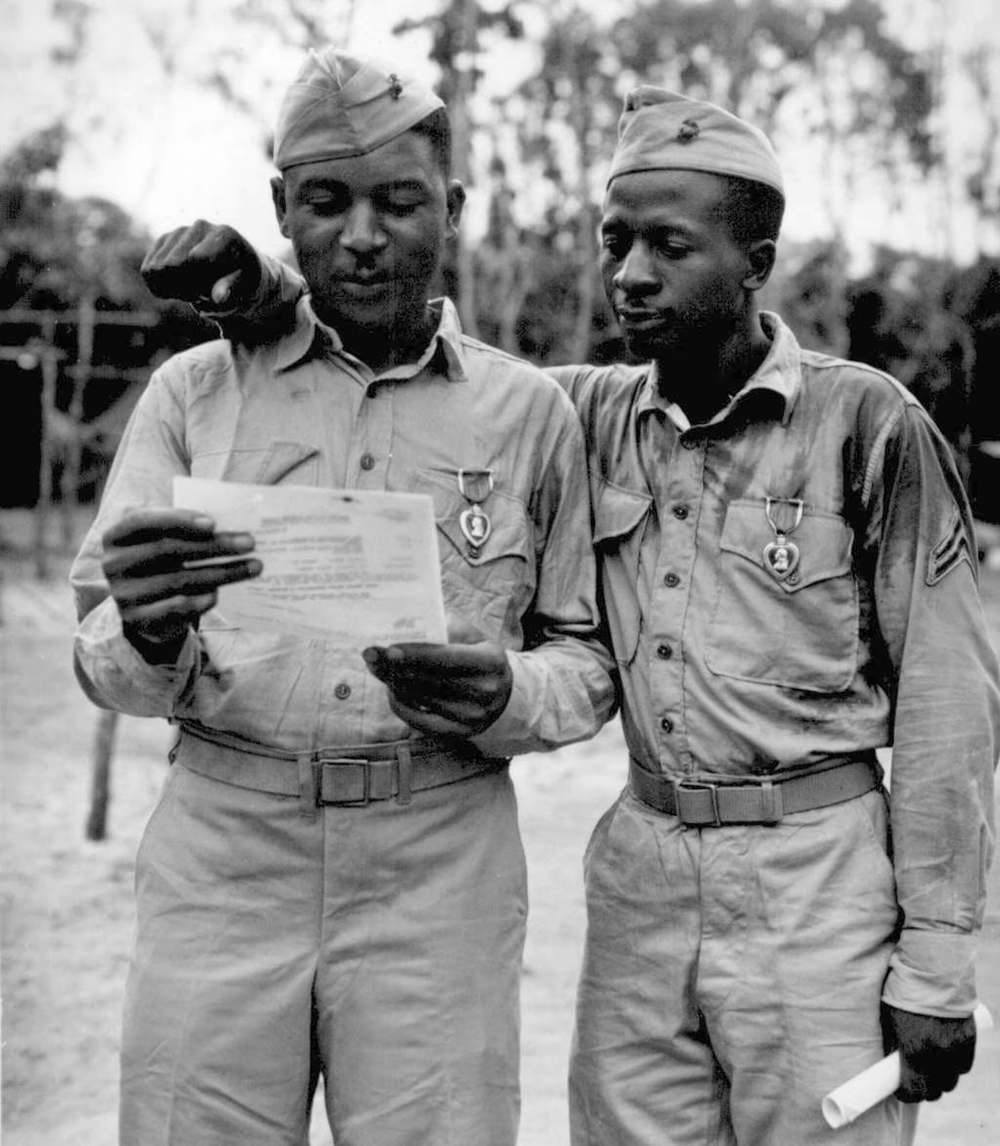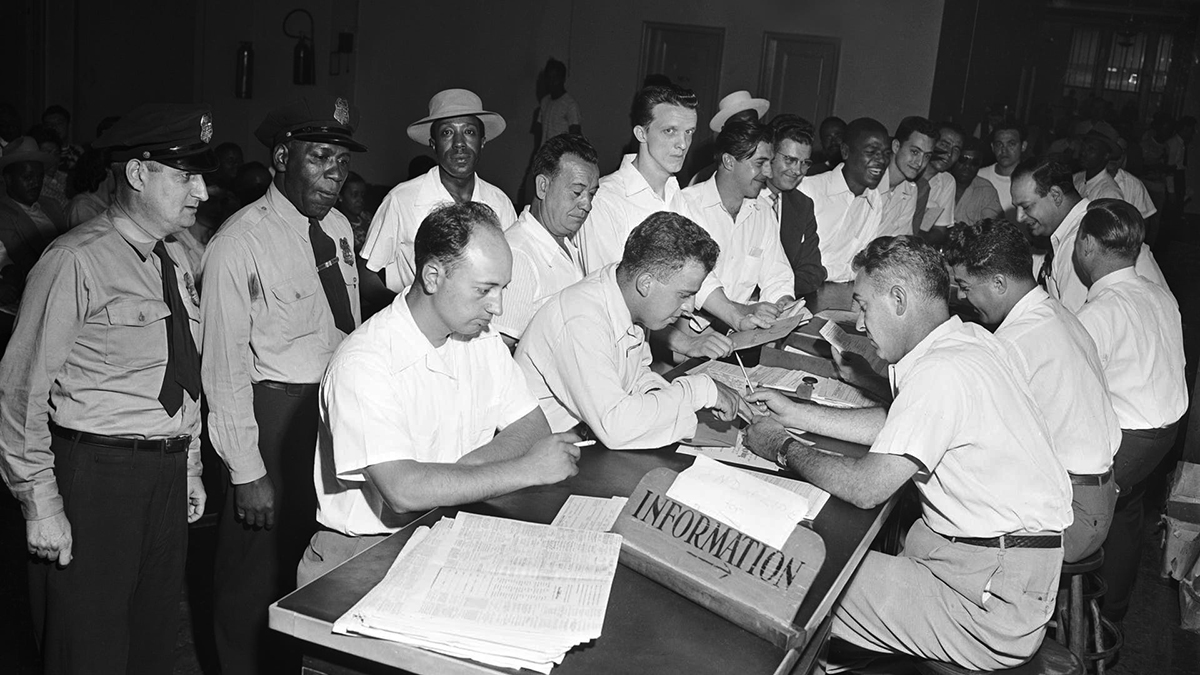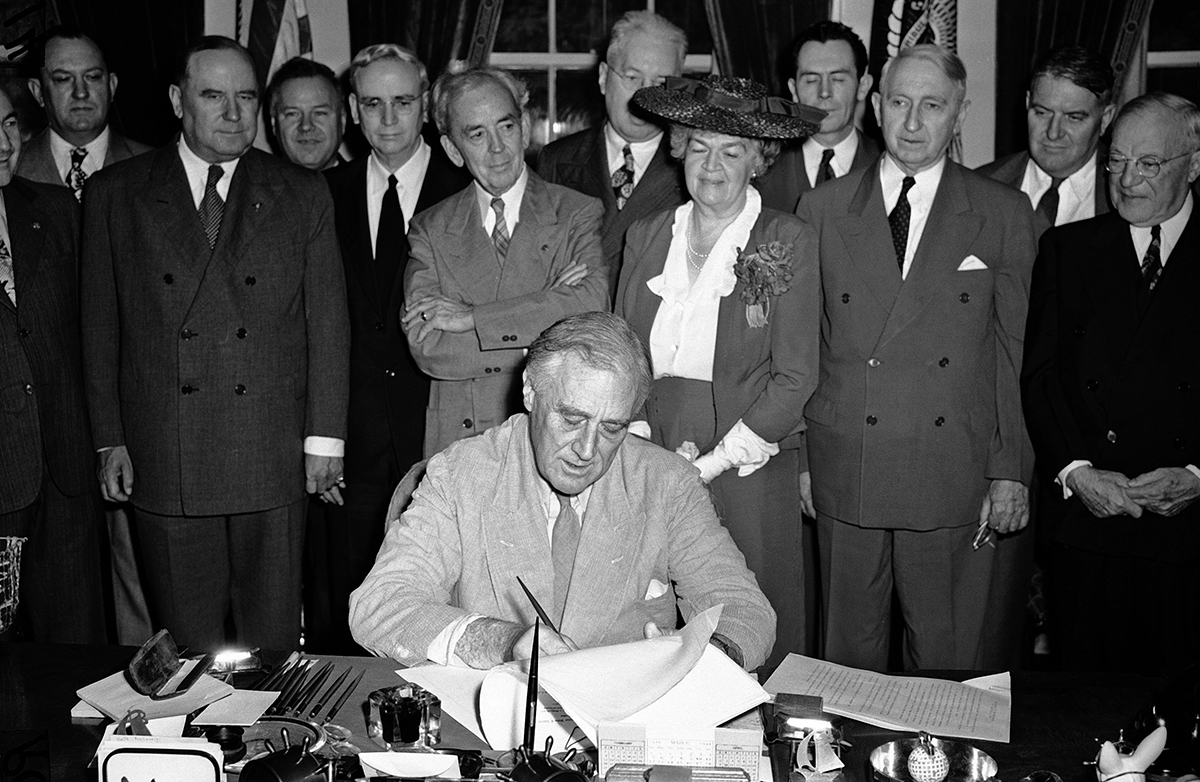When Eugene Burnett saw the neat tract houses of Levittown, New York, he knew he wanted to buy one. It was 1949, and he was ready to settle down in a larger home with his family. The newly established Long Island suburb seemed like the perfect place to begin their postwar life—one that, he hoped, would be improved with the help of the GI Bill, a piece of sweeping legislation aimed at helping World War II veterans like Burnett prosper after the war.
But when he spoke with a salesman about buying the house using a GI Bill-guaranteed mortgage, the door to suburban life in Levittown slammed firmly in his face. The suburb wasn’t open to black residents. “It was as though it wasn’t real,” Burnett’s wife, Bernice, recalled. “Look at this house! Can you imagine having this? And then for them to tell me because of the color of my skin that I can’t be part of it?”
The Burnetts weren’t the only black Americans for whom the promise of the GI Bill turned out to be an illusion. Though the bill helped white Americans prosper and accumulate wealth in the postwar years, it didn’t deliver on that promise for veterans of color. In fact, the wide disparity in the bill’s implementation ended up helping drive growing gaps in wealth, education, and civil rights between white and black Americans.
While the GI Bill’s language did not specifically exclude African-American veterans from its benefits, it was structured in a way that ultimately shut doors for the 1.2 million black veterans who had bravely served their country during World War II, in segregated ranks.

Fear of Black Advancement
When lawmakers began drafting the GI Bill in 1944, some Southern Democrats feared that returning black veterans would use public sympathy for veterans to advocate against Jim Crow laws. To make sure the GI Bill largely benefited white people, the Southern Democrats drew on tactics they had previously used to ensure that the New Deal helped as few black people as possible.
During the drafting of the law, the chair of the House Veterans Committee, Mississippi Congressman John Rankin, played hardball and insisted that the program be administered by individual states instead of the federal government. He got his way. Rankin was known for his virulent racism: He defended segregation, opposed interracial marriage, and even proposed legislation to confine, then deport, every person with Japanese heritage during World War II.
When the bill came to a committee vote, he stonewalled in an attempt to gut another provision that entitled all veterans to $20 a week of unemployment compensation for a year. Rankin knew this would represent a significant gain for black Southerners, so he refused to cast a critical proxy vote in protest. The American Legion ended up tracking down the Congressman who had left his proxy vote with Rankin and flew him to Washington to break the deadlock.
Roosevelt signed the Servicemen’s Readjustment Act into law on June 22, 1944, only weeks after the D-Day offensive began. It ushered into law sweeping benefits for veterans, including college tuition, low-cost home loans, and unemployment insurance.

The GI Bill’s Effect on Black Veterans
From the start, black veterans had trouble securing the GI Bill’s benefits. Some could not access benefits because they had not been given an honorable discharge—and a much larger number of black veterans were discharged dishonorably than their white counterparts.
Veterans who did qualify could not find facilities that delivered on the bill’s promise. Black veterans in a vocational training program at a segregated high school in Indianapolis were unable to participate in activities related to plumbing, electricity, and printing because adequate equipment was only available to white students.
Simple intimidation kept others from enjoying GI Bill benefits. In 1947, for example, a crowd hurled rocks at black veterans as they moved into a Chicago housing development. Thousands of black veterans were attacked in the years following World War II and some were singled out and lynched.
Though Rankin had lost the battle to exclude black men from VA unemployment insurance, it was doled out inequitably. Men who applied for unemployment benefits were kicked out of the program if any other work was available to them, even work that provided less than subsistence wages. Southern postmasters were even accused of refusing to deliver the forms black veterans needed to fill out to receive their unemployment benefits.
Black veterans and civil rights groups protested their treatment, calling for protections like black involvement in the VA and non-discriminatory loans, but the racial disparities in the implementation of the GI Bill had already been set into motion. As the years went on, white veterans flowed into newly created suburbs, where they began amassing wealth in skilled positions. But black veterans lacked those options. The majority of skilled jobs were given to white workers.

A White Post-War Housing Boom—And Redlining in Black Neighborhoods
The postwar housing boom almost entirely excluded black Americans, most of whom remained in cities that received less and less investment from businesses and banks. Though the GI Bill guaranteed low-interest mortgages and other loans, they were not administered by the VA itself. Thus, the VA could cosign, but not actually guarantee the loans. This gave white-run financial institutions free rein to refuse mortgages and loans to black people.
Redlining—a decades-old practice of marking maps by race to characterize the risks of lending money and providing insurance—made purchasing a home even more difficult for black veterans. Lenders froze out poorer neighborhoods, ensuring that loan assistance and insurance would be denied. And new white suburbs often came with overtly racist covenants that denied entry to black people.
In 1947, only 2 of the more than 3,200 VA-guaranteed home loans in 13 Mississippi cities went to black borrowers. “These impediments were not confined to the South,” notes historian Ira Katznelson. “In New York and the northern New Jersey suburbs, fewer than 100 of the 67,000 mortgages insured by the GI bill supported home purchases by non-whites.”
Failure to Receive GI Bill Education Benefits
Black veterans in search of the education they had been guaranteed fared no better. Many black men returning home from the war didn’t even try to take advantage of the bill’s educational benefits—they could not afford to spend time in school instead of working. But those who did were at a considerable disadvantage compared to their white counterparts. Public education provided poor preparation for black students, and many lacked much educational attainment at all due to poverty and social pressures.
As veteran applications flooded universities, black students often found themselves left out. Northern universities dragged their feet when it came to admitting black students and Southern colleges barred black students entirely. And the VA itself encouraged black veterans to apply for vocational training instead of university admission and arbitrarily denied educational benefits to some students.
Those students who did try to attend college found doors closed at every turn. A full 95 percent of black veterans were shunted off to black colleges—institutions that were underfunded and overwhelmed by the influx of new students. Most were unaccredited, and with a massive influx of applicants, they had to turn away tens of thousands of veterans.
“Though Congress granted all soldiers the same benefits theoretically,” writes historian Hilary Herbold, “the segregationist principles of almost every institution of higher learning effectively disbarred a huge proportion of black veterans from earning a college degree.”

The GI Bill and the Racial Wealth Gap
The original GI Bill ended in July 1956. By that time, nearly 8 million World War II veterans had received education or training, and 4.3 million home loans worth $33 billion had been handed out. But most black veterans had been left behind. As employment, college attendance and wealth surged for whites, disparities with their black counterparts not only continued but widened. There was, writes Katznelson, “no greater instrument for widening an already huge racial gap in postwar America than the GI Bill.”
Today, a stark wealth gap between black and white Americans persists. The median wealth for white households is about $171,000. For black households, it’s just $17,100—about one-tenth that of their white counterparts. The legacy of the GI Bill is still at work—and for black families, its negative impact could linger for years to come.

